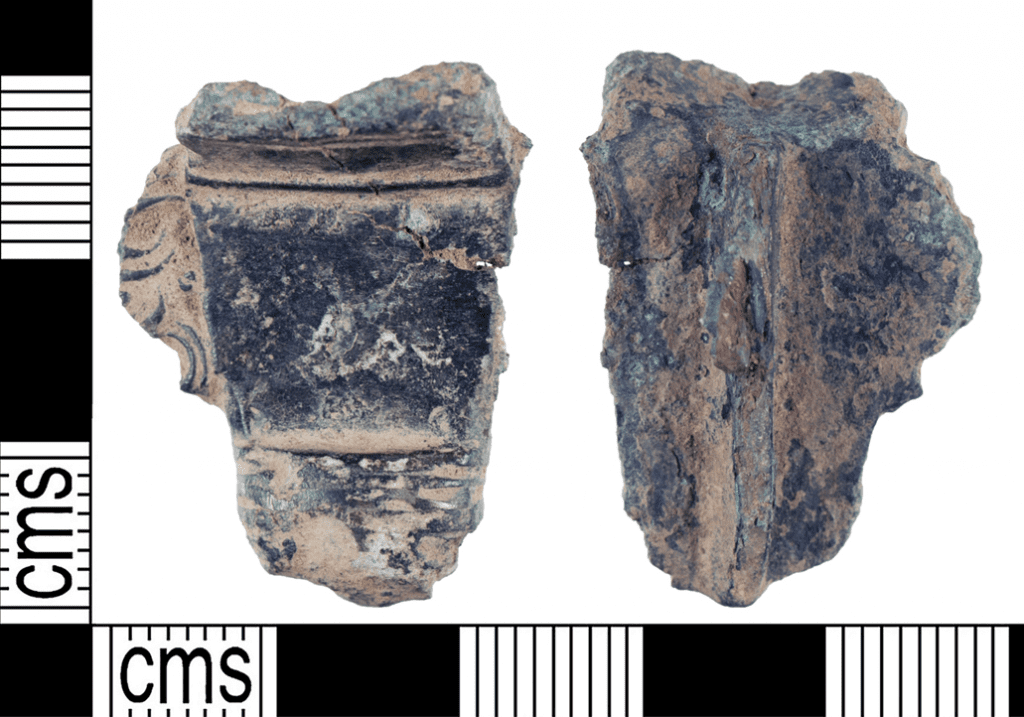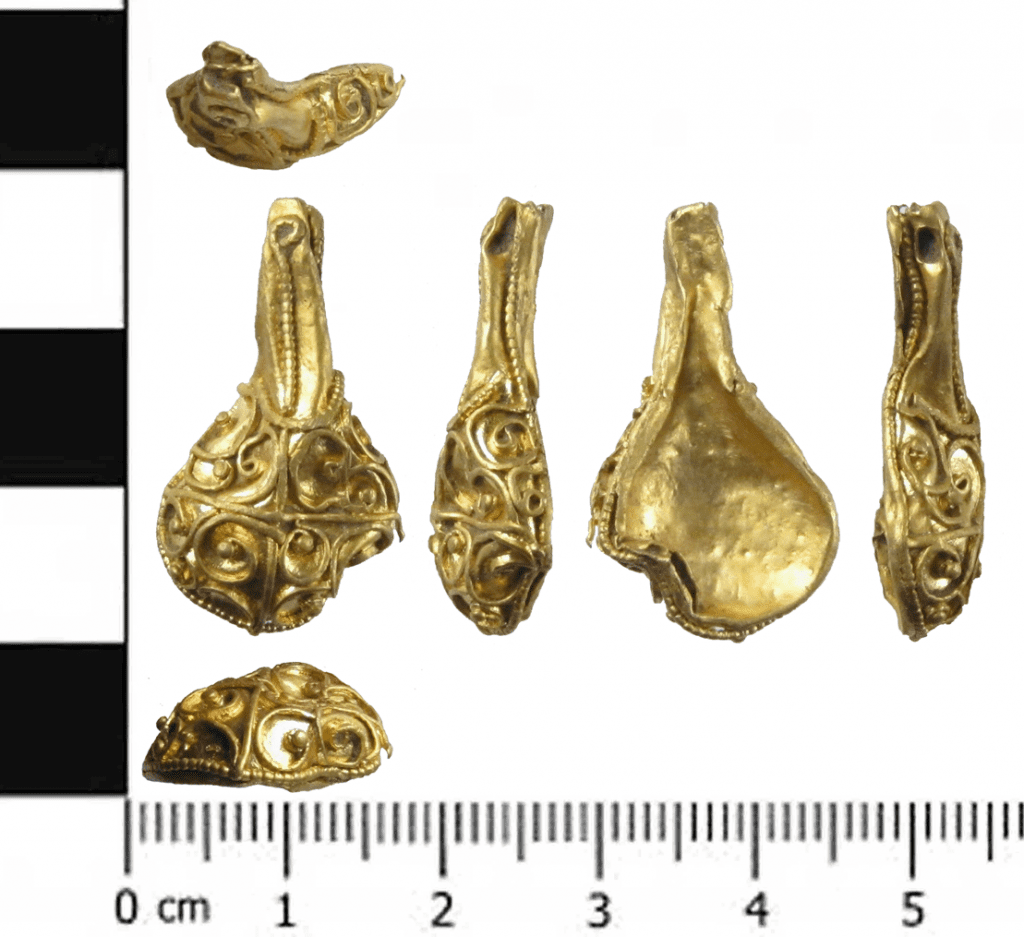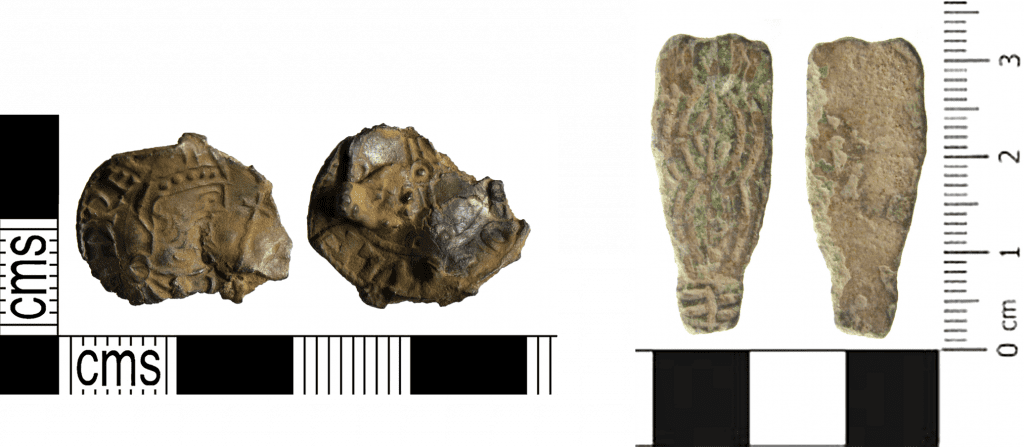The Anglo Saxon period following the Roman road is much harder to discern in the archaeological record, and that is the same in Green Hammerton. It seems likely that given the proximity to road, and likely continued use of the road, that settlement continued in the area.
From the Anglo Saxon period we have a fragment of a cruciform brooch which is from the PAS:

This is part of a brooch which would have been worn by a high status woman around the 5th to 6th century. It’s a bit hard to tell what it looked like, so here is a complete example from the British Museum:

The fragment is part of the cross piece of the brooch. Usually these brooches are found in burials, so it suggests a high status woman was buried in GH. For the immediate post Roman period, it seems likely a small population would have continued in Green Hammerton.
If we move forward a couple of hundred years, we have one of the most spectacular finds from the PAS:

This is a gold aestel or pointer, dating to the 9th century. These items are very unusual in Britain, only a handful are known from this period. An aestel would have been used (probably in an ecclesiastical setting) for reading. A medieval manuscript would have had been small, dense, text so the aestel is used to keep your place whilst reading.
Given Green Hammerton neighbours Kirk Hammerton which includes a church in the village dating to around the 10th century. The design of this aestel is more 9th century in type, which may suggest an earlier date for the church in Kirk Hammerton. It is certain an object like this would have been used by a high status and literate churchman.
Our last items from the PAS database:

On the left we have a small set of fused coins showing Edward the Confessor, perhaps a dropped purse from around the 1050sAD.
On the left we have a strap end from a belt with simple decoration. In it’s prime this would have been a shiny gold colour (it’s made of bronze).
